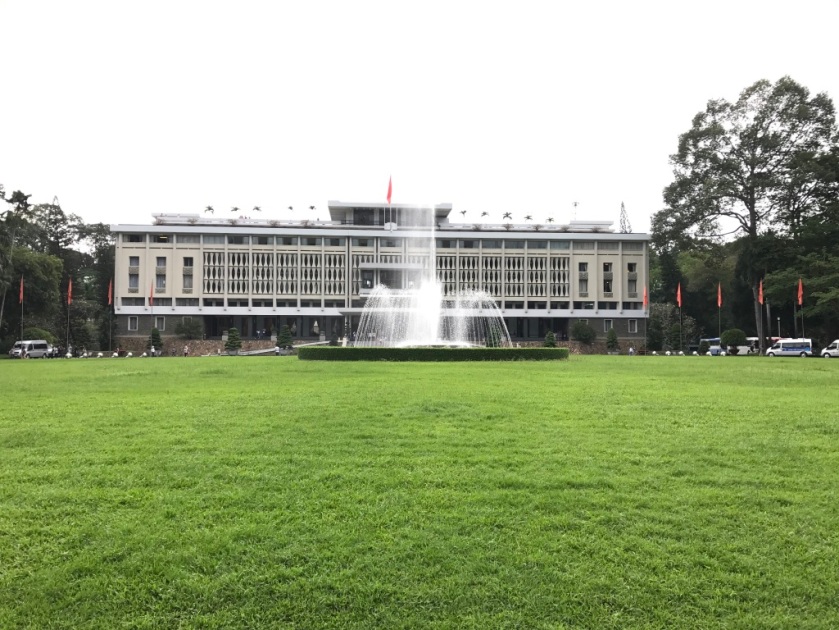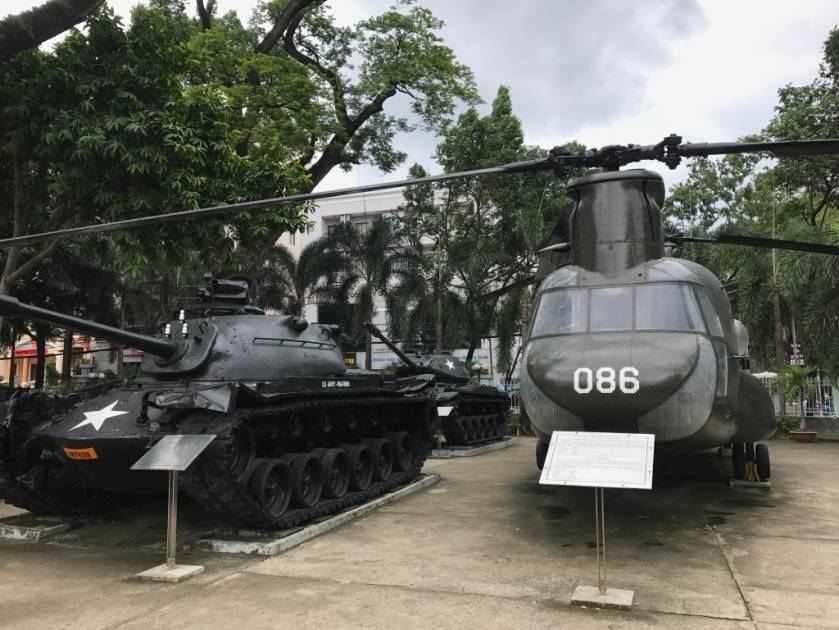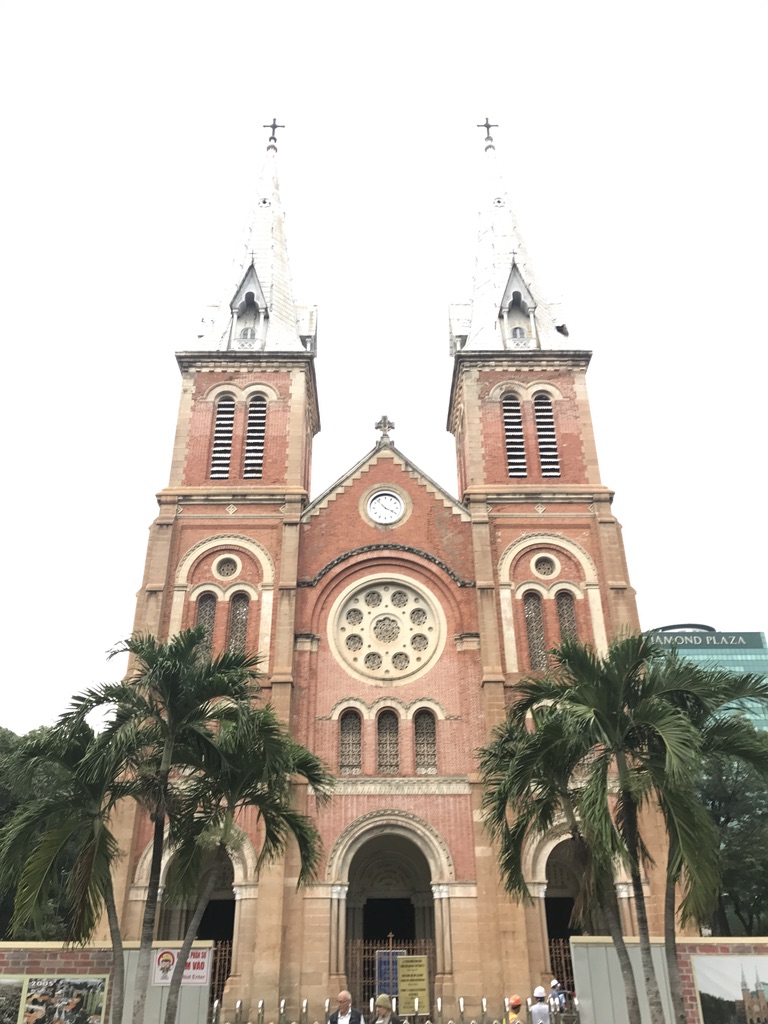I started my Vietnam journey with the lovely city of Ho Chi Minh. Originally called Saigon, but rechristened after the northern Vietnamese (Vietcong) won the war against southern Vietnam. Not many know about the Vietnam war, and the reasons behind it (included me, until this trip), so I’ll start this post with a bit of background. What I say may sound opinionated (it is), and it’s very likely that I have missed mentioning, or perhaps I may not even be aware of, some of the facts surrounding the war. But this is what I understand of the situation:
Vietnam was a French colony and under the French, like every other country under foreign rule, they were oppressed. Towards the end of WWII, the attitude of oppressed nations (including Vietnam) changed. The fight for freedom was gaining traction, and it was getting harder for the oppressors, especially the allies of WWII, to continue to hold their colonies while stopping Germany from doing the same in Europe – they couldn’t take a noble stance at the UN if they themselves committed atrocities outside Europe.
Vietnam demanded independence, but the French didn’t want that; the riches they were looting from Vietnam were too valuable to let go of. France had suffered heavily in WWII, and sought the help of the United States in controlling Vietnam. Under Ho Chi Minh (the leader of the Worker’s Party of Vietnam), however, the Vietnamese declared independence from the French rule. The details aren’t necessary (nor do I know them well enough), but as a result of this declaration of independence, Vietnam was split into two. Ho Chi Minh’s party controlled the north, while the French (with the help of the USA) indirectly controlled the south – installing a Vietnamese puppet to rule the south. By the mid 1950s though, the French had more or less left Vietnam, and the southern Vietnamese cause was aided and controlled only by the USA.
The Vietcong began their attempts to free the south and unify Vietnam as one independent nation. The Vietcong were a communist regime, while the south of Vietnam was an attempt at democracy. The USA didn’t want this. They wanted Vietnam (or at least southern Vietnam) to be a democracy – because they didn’t want communism in more countries of the world. Why was this USA’s problem? Your guess is as good as mine. But from what I understand, they were financially (and politically) motivated – war is, after all, the best kind of business. And while the USA didn’t ‘officially’ enter the war against Vietnam until 1965, they long funded the war by aiding the southern Vietnamese.
On the flip-side, Russia, along with a few other communist nations decided to support the Vietcong. If USA was supporting the south, the Russians probably found it fit to support the north. With this, Vietnam ended up being a battleground that continued the cold war between the communist regimes of Russia and the democratic nation of USA. The southern Vietnamese were armed with US provided helicopters, tanks, bombs, guns and other ammunition, while Russia and China took care of the Vietcong. And though the battle went on for decades, and the casualties were mainly Vietnamese.
The Vietnamese were basically pawns. The US did everything they could to force the Vietcong to retreat, including the use of Agent Orange, but the Vietcong had some serious fight in them. In spite of being repeatedly bombed by the USA: every single day, for years and years, the Vietcong did not give in. Through the war, the USA dropped 7 million tons of bombs in Vietnam – that’s more than double the amount dropped in Europe and Asia in WWII! As for the chemical warfare, please Google ‘Agent Orange’ to see the consequences of what the chemical did to the locals.
In the end, the Vietcong proved to be too resilient. They were masters of guerrilla warfare, and although USA didn’t officially lose the war – they withdrew forces from southern Vietnam, which led to the downfall of the southern Vietnamese regime – it seems pretty clear that it was a war that they were not likely to win.
A badass, war-movie like interaction took place when the Vietcong army entered Saigon, broke through what is now called the Reunification Palace (post-war name to signify the reunification of the north and south of Vietnam), and entered the cabinet room where General Duong Van Minh, the leader of the southern Vietnamese forces, along with his advisors were waiting. I quote from Wiki: “The revolution is here. You are here,” Minh said. He added, “We have been waiting for you so that we could turn over the government.” Colonel Bui Tin, the commander of the Vietcong curtly replied, “There is no question of your transferring power. Your power has crumbled. You cannot give up what you do not have.”

Coming back to the city as it is today, they have the War Remnants Museum that gives you, admittedly, a pro-Vietcong view of the war. But the museum is worth a visit. They have a whole section dedicated to the horrific consequences of Agent Orange – and the pictures made my insides churn. There’s a lot of American tanks, helicopters and planes on display in the courtyard outside the museum, and they are pretty cool.




A short drive away from Ho Chi Minh City, there is a town by the name of Cu Chi, that has what remains of the famous Cu Chi Tunnels. During the war, most of the fighting took place in the middle of Vietnam by the border between the north and the south. But the Vietcong found a way to bring the battle to the south. They took the sea route from the north, and went all around Vietnam to Cambodia, from where they entered the mainland, moved northwards, and then cut east to Cu Chi in Vietnam.
If you want to see how the Vietcong fought, this is the place to go. Masters of guerrilla warfare, these locals were farmers by the day, and soldiers by night. They used these tunnels as a place to hide, as well as a place to eat, sleep, store weapons, and sneak up on the enemy. The network forms a part of a larger network of underground tunnels, and the Cu Chi Tunnels themselves are around 120kms long – stretching all the way to Cambodia. The tunnels themselves are so tiny, it’s amazing how these soldiers moved through them. The tunnels are a measly 60 centimetres by 80 centimetres, and the only way to move was crawling horizontally on their bellies.
The tourist accessible spot of the Cu Chi Tunnels are some of the few tunnel networks that have been preserve by the Vietnamese government, and a lot of the tunnels collapsed during the war because of the bombings. There’s an original entry point that you can briefly enter into to see what it was like to be in the tunnels, and there’s also a 100m stretch of tunnel that they’ve more than doubled in size through which tourists can enter to see what it was like being in the tunnels: claustrophobic, cramped, terribly hot, and tiring – in spite of them being king-sized.

I also visited the Mekong Delta, which is a vast network of rivers and rivulets that the Vietnamese use for trade and travel.

In terms of food, Ho Chi Minh City offers pretty much every kind of cuisine you could want. I stuck to Vietnamese food for the major part. I love bahn mi, and it’s probably one of the few good things the French did to Vietnam: they gave them the recipe to a perfect baguette. During my tour of the Mekong Delta there was also some snake infused rice wine on offer. It’s rice wine with some snake poison (the alcohol makes it harmless) and the snake itself (for added zing maybe?). A cool souvenir to take back from Vietnam.


A lot of people don’t like Ho Chi Minh City, but that’s probably because they are expecting a Bangkok like experience. I really liked the city, its history, and as is standard with most of Southeast Asia, the people.
